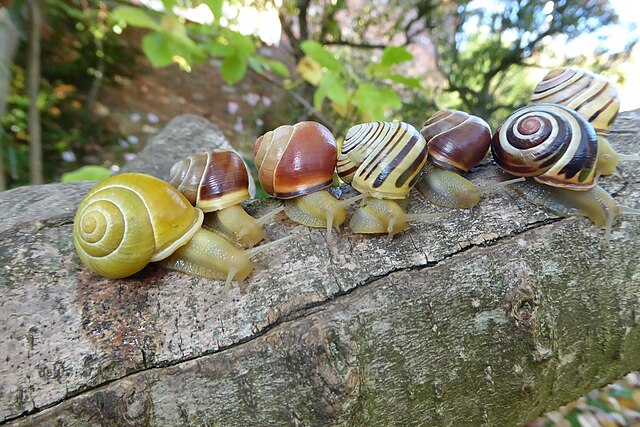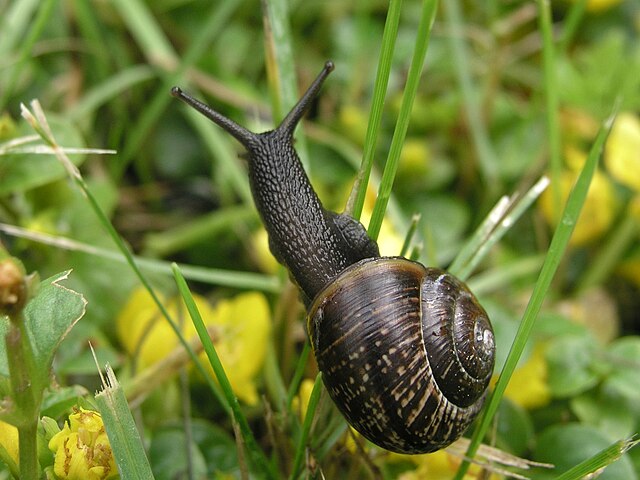Cepaea is a genus of large air-breathing land snails, terrestrial pulmonate gastropod molluscs in the family Helicidae. The shells are often brightly coloured and patterned with brown stripes. The two species in this genus, C. nemoralis and C. hortensis, are widespread and common in Western and Central Europe and have been introduced to North America. Both have been influential model species for ongoing studies of genetics and natural selection. Like many Helicidae, these snails use love darts during mating.
Cepaea
A comparison between Cepaea hortensis (left) and Caucasotachea vindobonensis (right)
Cepaea nemoralis, showing colour and banding polymorphisms
Song thrush anvil with broken Cepaea shells
Helicidae is a large, diverse family of western Palaearctic, medium to large-sized, air-breathing land snails, sometimes called the "typical snails." It includes some of the largest European land snails, several species are common in anthropogenic habitats, and some became invasive on other continents. A number of species in this family are valued as food items, including Cornu aspersum the brown or garden snail, and Helix pomatia. The biologies of these two species in particular have been thoroughly studied and documented.
Helicidae
Helicid snails for sale as food in Italy; from the front Eobania vermiculata, Cantareus apertus, and Helix sp.
Arianta arbustorum
Iberus gualtieranus alonensis








